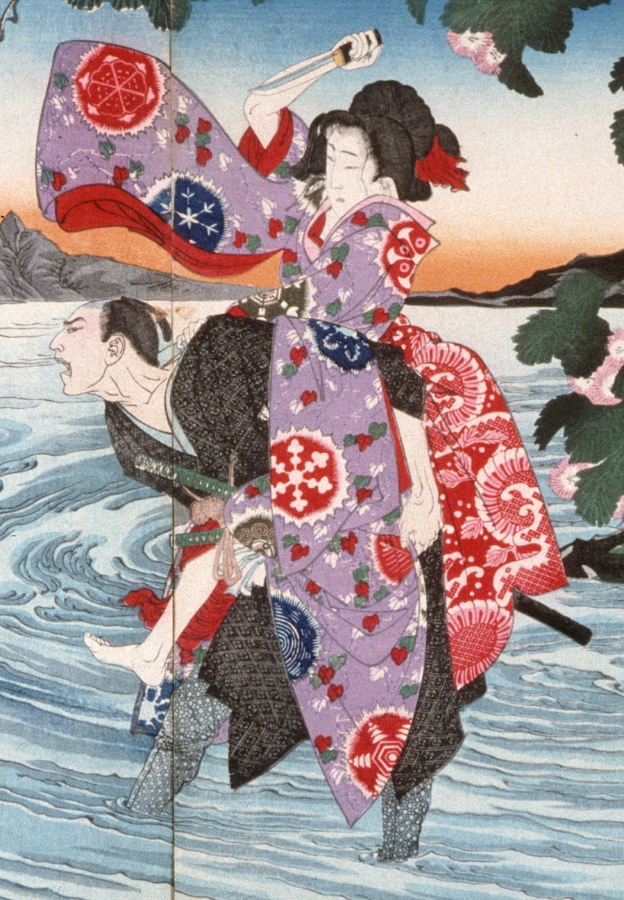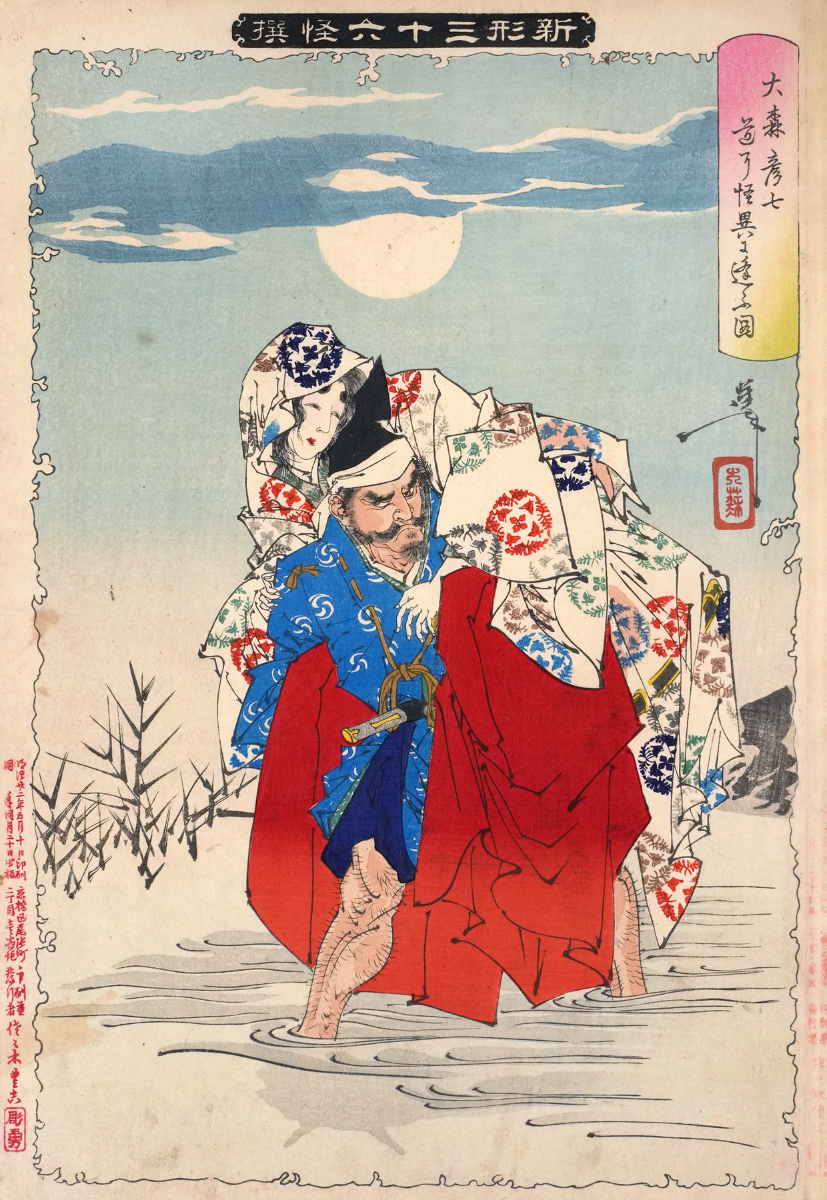Originating from a 14th-century legend, the samurai Shirosaburo suffers treachery at the hands of the beauty Kishin (lit. devil) Omatsu who he carries on his back across a swiftly flowing river. Shirosaburo is based on the historical warrior Omori Hikoshichi, an officer in the service of Ashikaga Takauji (1305-1358) who following their victory in the 1336 Battle of Minatogawa is said to have nearly been assassinated while carrying the daughter of the defeated warrior Kusunoki Masashige (1294-1336) across a river. Following adaptions in Noh theater, Omori Hikoshichi’s tale found its way to kabuki through the character Shirosaburo. Though the adaptations are many and varied, the image of a woman attacking the samurai who carries her across the water is a consistent one. In some plays she is the daughter of Masashige, in others she is Shirosaburo’s deceased wife who he had murdered while she was disguised as a highwayman, while in yet another version she is a demon looking for a lost sword. Though we cannot say with certainty which adaptation Yoshitoshi chose to depict here, her identification as kishin in the title suggests she is a demon or a spirit, perhaps from a version featuring the vengeful ghost of Shirosaburo’s late wife. Yoshitoshi would later depict the tale of Omori Hikoshichi in 1889 for the series New Forms of Thirty-Six Ghosts.
| Alias Demon Omatsu, Kishin Omatsu |
| Real Names/Alt Names ○ |
| Characteristics Villain, Myths & Legends, Demon, Medieval Age, Japanese |
| Creators/Key Contributors Tsukioka Yoshitoshi, ○ |
| First Appearance Japanese folklore |
| First Publisher ○ |
| Appearance List Noh theater and kabuki, including Noh repertoire play called “Yoroboshi” and variants tied to the Tales of the Taiheiki. Ukiyo-e: “The Demon Omatsu Murders Shirosaburō in the Ford” (1885), “Picture of the Demon Omatsu Killing Shirosaburo” (1886). |
| Sample Read Tsukioka Yoshitoshi Archive at Ronin Gallery [Ronin Gallery] |
| Description Originating from a 14th-century legend, the samurai Shirosaburo suffers treachery at the hands of the beauty Kishin (lit. devil) Omatsu who he carries on his back across a swiftly flowing river. Shirosaburo is based on the historical warrior Omori Hikoshichi, an officer in the service of Ashikaga Takauji (1305-1358) who following their victory in the 1336 Battle of Minatogawa is said to have nearly been assassinated while carrying the daughter of the defeated warrior Kusunoki Masashige (1294-1336) across a river. Following adaptions in Noh theater, Omori Hikoshichi’s tale found its way to kabuki through the character Shirosaburo. Though the adaptations are many and varied, the image of a woman attacking the samurai who carries her across the water is a consistent one. In some plays she is the daughter of Masashige, in others she is Shirosaburo’s deceased wife who he had murdered while she was disguised as a highwayman, while in yet another version she is a demon looking for a lost sword. Though we cannot say with certainty which adaptation Yoshitoshi chose to depict here, her identification as kishin in the title suggests she is a demon or a spirit, perhaps from a version featuring the vengeful ghost of Shirosaburo’s late wife. Yoshitoshi would later depict the tale of Omori Hikoshichi in 1889 for the series New Forms of Thirty-Six Ghosts. |
| Source Tsukioka Yoshitoshi – Scholten Japanese Art |


